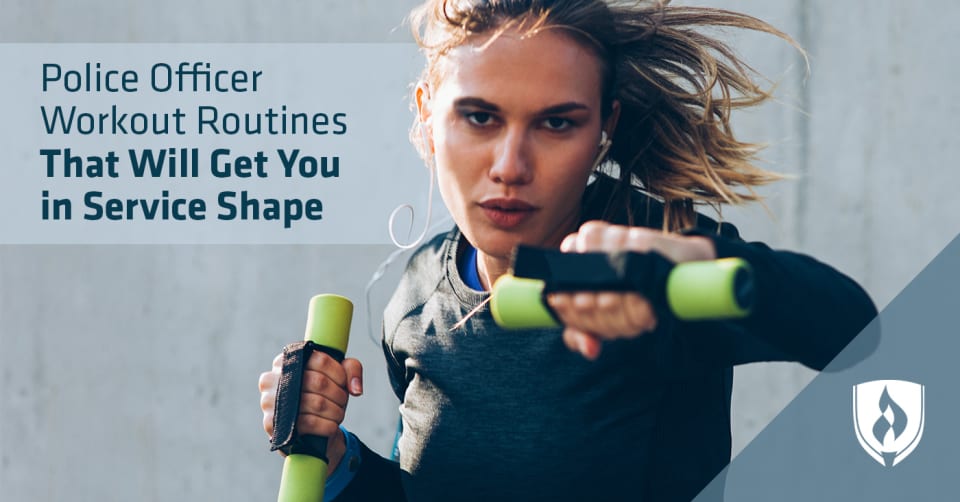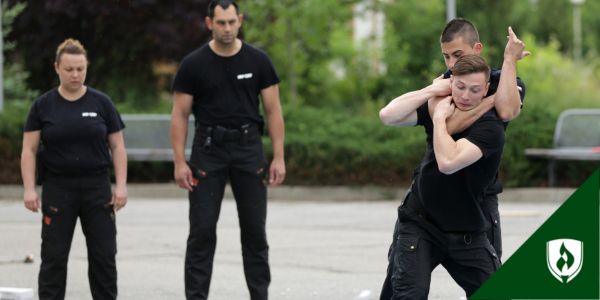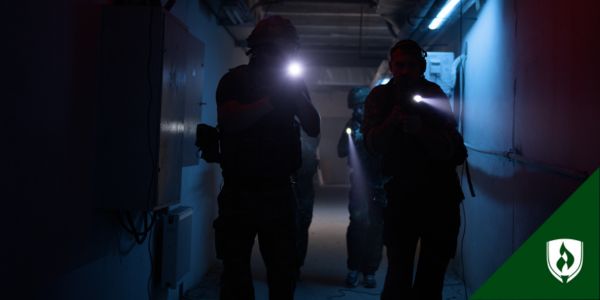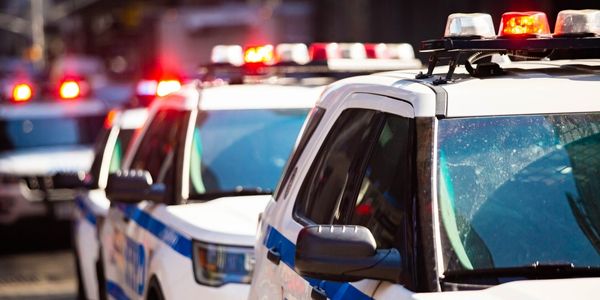Police Officer Workout Routines that Will Get You in Service Shape
By Kristina Ericksen on 11/21/2014

There’s no denying that police officers warrant a lot respect. No one serves the public quite like them. With perks like a cool squad car, a utility belt loaded with tools of the trade and the camaraderie of fellow officers, police officers lead exciting and rewarding careers
But being an authority of the law comes with a lot of responsibility too. You’re not just maintaining order; you’re keeping people safe and saving lives. You have to be prepared for anything. It’s a tough job, but that doesn’t faze you!
Part of being a well-equipped officer is maintaining peak physical condition. Police departments across the country conduct fitness testing when training and hiring officers. However, it’s up to you to keep in shape. But what exactly is the best workout for a police officer?
“Due to the nature of the work it is vital that police officers are working full body movements and they work them in as many different directions as possible,” fitness professional Ian Montel says.
We asked him to outline a week-long police officer workout routine to help keep you in shape for the job.
Day 1: Aerobic cardio (speed, agility, quickness)
Cardiovascular exercise is essential to any police officer workout. It not only strengthens your heart and lungs, but it also helps build your physical endurance. Cardio exercises also help you maintain a healthy body weight, according to the American Counsel on Exercise. On this day, Montel says you should get in your target heart rate zone and focus on three key fitness elements: speed, agility and quickness.
When you hear about cardio exercises, many people immediately think about running. However, there are several ways to get active and agile while raising your heart rate. Cone cutting drills allow you to move in many directions and practice starts, stops and reactions, all necessary to any police officer.
Try your hand at jump roping or doing cardio circuits with one minute intervals of burpees, squats and jumping jacks. A vigorous game of tennis, soccer, basketball or flag football can also do the trick. As long as you remain active for 20 to 30 minutes, you will reap the benefits of your cardio exercise, according to WebMD.
Day 2: Full-body workout
Police officer workouts need to push the entire body, rather than targeting isolated muscles, says fitness expert Jillian Bullock. That’s why it’s essential to do exercises to focus on all-over strength, which Montel recommends for Day two of your police officer workout routine.
Full-body workouts are a great way to strengthen bones, increase muscle and ward off injury, which is one of the top concerns of a police officer. They also allow you to work out more efficiently by burning more calories and building more muscle compared to working one muscle at a time, according to Live Strong.
For a full-body workout, try squats with lateral arm raises. The squats and weights will work your thighs and biceps. Planks are also a great way to strengthen the muscles in your core and back. Elevate one leg or rotate to your side to increase the difficulty and work your shoulders and thighs.
Kettlebell exercises involve full-body movements and work on increasing both strength and mobility. They also strengthen joints, making you less susceptible to injury, according to Riverside Kettlebells. And don’t forget swimming, which utilizes many muscles through resistance in the water.
Day 3: Moderate aerobic cardio and recovery
Montel suggests staying active on the third day of your police officer workout routine with some moderate exercise. Return to cardio exercises but keep your vigor at a more moderate level. Try speed walking, inline skating, swimming, cross-country skiing, yoga, or hiking for thirty minutes.
This restrained activity will help to alleviate muscle soreness and stiffness from previous workouts. These forms of active recovery will give your muscles a break and should leave you feeling better once you’re finished.
Day 4: Anaerobic cardio
Day four is all about anaerobic cardio, Montel says. Anaerobic exercise improves your muscle strength and oxygen consumption during the workout. It also increases your endurance over longer periods of time, according to Spark People. The key to anaerobic cardio is interval training, or alternating high-intensity activity with low-intensity activity. These intense spurts are your all-out effort and cannot be maintained for long durations of time.
Sprinting is an effective form of anaerobic cardio. Bullock suggests alternating between running full speed for one minute and walking for one minute to build your endurance. You can also try alternating between high speeds and steeper inclines on the treadmill for high-intensity interval training.
Day 5: Muscular endurance training
On this day focus on strength training by pushing your muscles harder. Muscular endurance is the ability for a muscle to do continuous work over a prolonged period of time. This combination of endurance and strength training is essential to overcoming fatigue in any fitness routine, according to Sports Fitness Advisor.
Aim for several sets and repetitions for muscular endurance training. Try doing sets of leg presses, calf raises, shoulder presses and bicep curls of about 15 to 20 repetitions for muscular endurance beginners. As you build strength, push yourself to do more sets and repetitions to keep your muscles engaged for longer periods of time. You can also do dumbbell lunges, medicine ball throws, back extensions, curls or dead lifts, Sports Fitness Advisor suggests.
Day 6: Aerobic cardio – long duration
On day six of your police officer workout routine, focus on long-duration aerobic exercise. Aim for a low to moderate level of intensity over an extended period of time, such as 60 to 90 minutes, fitness writer Elle Di Jensen suggests. Unlike other types of exercise, the calories burned from long-duration cardio come from fat. Another major perk of long-duration, moderate-intensity cardio is that it’s a pace you can maintain. That means you can burn the greatest amount of fat for a longer time, according to Muscle and Strength.
Enjoy a nice, long run or spend some time on an elliptical machine. Go cycling on an elevated course or try your hand at rowing. Any form of cardio exercise is suitable as long as you keep the level of exertion at mild to moderate.
Day 7: Rest
Take a break from exercise on this last day. Incorporating an off day allows your body to recover, repairing any damaged tissues and allowing your muscles to strengthen. Plus, a rest day can help ward off any potential fatigue, according to the Huffington Post. Enjoy your day off!
Are you up for the challenge?
Police officers put it all on the line when it comes to keeping citizens safe. It’s a career that yields a lot of authority and respect, but not everyone is cut out for service. It’s a dangerous job and anything can happen when you’re on duty. That’s why it’s essential to prepare yourself for the unexpected by staying in top shape.
If this workout routine is no-sweat for you, you may have the chops to become a cop! It’s a tough job but if you think you’ve got what it takes, check out, "How to Become a Police Officer: Your Step-by-Step Guide."
*Consult a physician or medical provider for guidance prior to starting any diet and/or exercise program, and clear such activities with them. The writer of this blog post is not a medical or fitness professional and the information above is posted for general informational purposes only. If you read the information above and choose to incorporate any or all of the elements in your personal workout routine without consulting your physician, you are doing so at your own risk.




